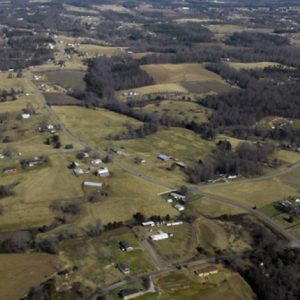General News

The Carolinas Urban-Rural Connection: Strengthening ties to revitalize communities
[Read the full report here] It was a cold January day in 2018 when eight researchers from UNC Charlotte’s Urban Institute stepped out into the brisk air in Hamlet, a small town in Richmond County, N.C. A dusting of snow from a surprise storm the previous day still covered the railroad tracks adjacent to the […]

Defining our study area: How we picked the 32 counties
The city of Charlotte has a long reach. While this is certainly not a surprise, we don’t really know much about how Charlotte influences its surroundings and how far this reach extends. We do have some conventions to help us understand the extent to which our region is connected. Metropolitan areas are commonly used to […]

Historical Overview Part 3: The rise of banking builds a globally connected region
While Duke was building the world’s largest electrical network in the Western Piedmont, some Charlotte mill owners recognized that more money could be made loaning money to aspiring industrialists than making cloth themselves.

Historical Overview Part 2: Post-Civil War, the region becomes an industrial system
From an agrarian system to an economy based on rural mills and factories drawing workers from former farms and sending goods to Charlotte for distribution, the region undergoes rapid change.

Trails, roads, rails and sky: The changing physical connections that knit our region together
A growing web of infrastructure and physical connections – both within the wider region and between the region and the outside world – has had a profound effect on where growth went, and where it stayed away from. People and industries in the Carolinas Urban-Rural Connection study area followed trading paths, railroads, highways and, now, air service.

Five 2019 Historic Preservation Awards winners announced in Charlotte
Charlotteans often lament how many old buildings here have been torn down, but there are still structures worth saving, along with groups and developers willing to put in the work.
On Thursday, the Charlotte Museum of History announced the winners of its 2019 Historic Preservation Awards. The five honorees, from 27 nominations, include a historic high school gym, a hip, repurposed mill, and historic houses.

2020: Four plans coming together next year will guide growth for a generation
Next year’s news cycle is already looking pretty crowded, between big-ticket events like the Republican National Convention in Charlotte, the summer Olympics in Tokyo and, of course, the 2020 presidential, gubernatorial and congressional elections. But if there weren’t so much else going on, 2020 might be known as something else in Charlotte: The Year of […]

Preserving rare plants: In search of Heller’s blazing star
How do you protect a plant that grows only on rocky outcrops at high elevations in the Amphibolite Mountains of northwestern North Carolina? It takes a team.

‘Horrifyingly beautiful:’ An architect and designer turns his attention to borders and walls
Ronald Rael gained national attention this summer for installing teeter-totters through the U.S.-Mexico border fence, allowing children on either side to play, but the architect and designer has been studying borders, walls and their meaning for much longer. Rael, based at UC Berkeley and principal at design studio Rael San Fratello, with partner Virginia San […]

Finding the beauty in a bagworm
The overall cluster was about the size of my fist. A woven cylindrical core was decorated with willow oak leaves, some of them whole and others torn. They had been applied in an intriguingly symmetrical pattern, creating the effect of wings and a tail. Tiny twigs with swollen buds had also been incorporated into the design, their weight providing a ballast. The creature twirled and fluttered in the breeze, a sylvan ballerina.